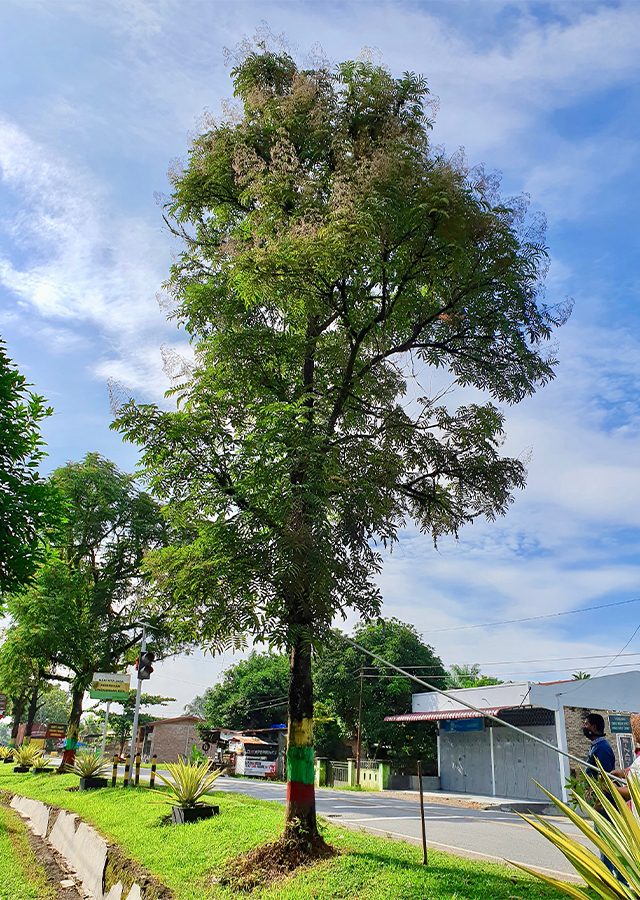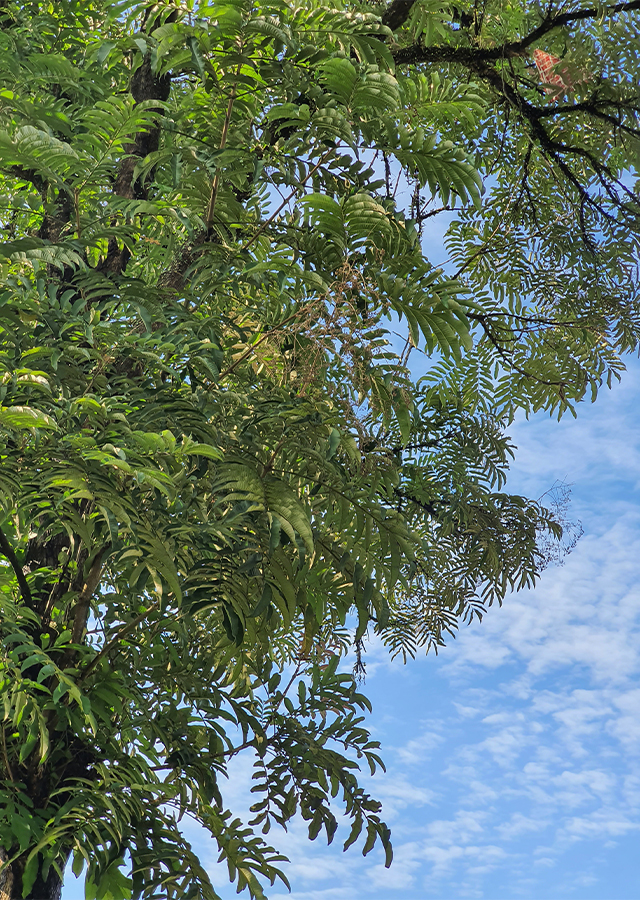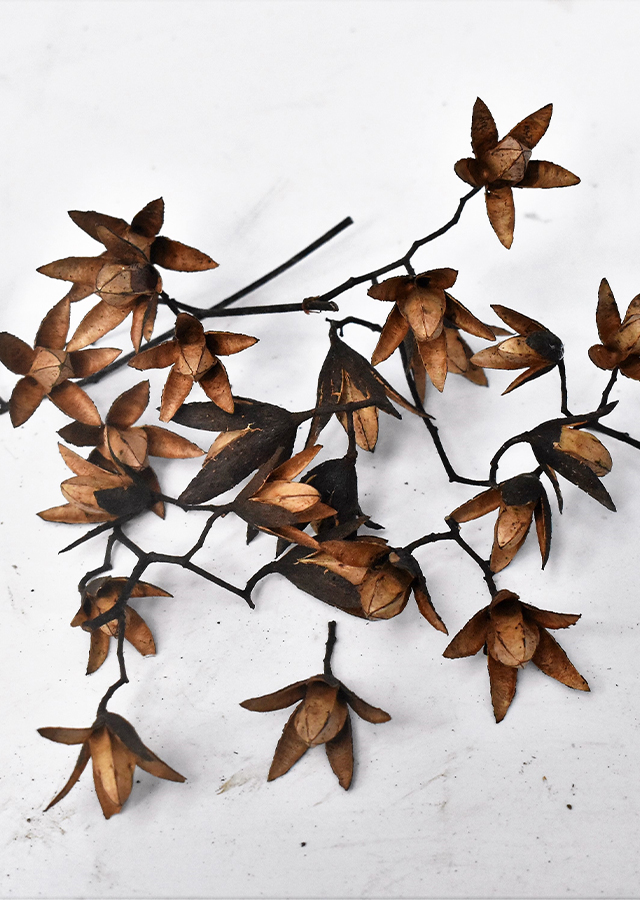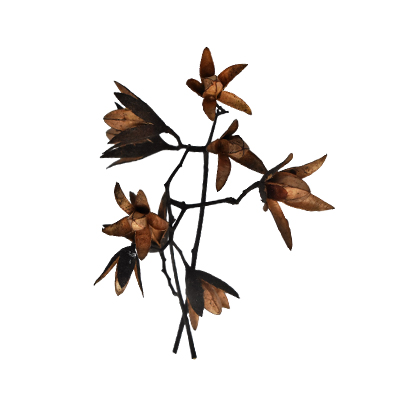Chinese Cedar
Toona sinensis (Juss.) M.Roem.
Meliaceae
Location in our garden
Principal



Synonym
Toona serrata (Royle) M.Roem.
Toona glabra (C.DC.) Harms
Toona longifolia M.Roem.
Habitus
Trees. Deciduous tree, perennial hardwood, growing up to 40 m tall
Part Used
Leaves
Seeds
Bark
Roots
Stem
Growing Requirements
Full Sunshine
Low Temperature
Habitat
Forest
Mountains
Overview
Chinese Cedar is native to Borneo, China North-Central, China South-Central, China Southeast, East Himalaya, Jawa, Laos, Malaya, Myanmar, Nepal, Pakistan, Sri Lanka, Sumatera, Thailand, Tibet, and Vietnam. It is also introduced into Afghanistan, Korea, Maryland, Tanzania, and Uganda. The tree is harvested from the wild for local use as food and medicine. It has been widely exploited for its valuable timber, and can also be used as insecticide.
Vernacular Names
Taungdama (Burmese), Cedrel (Dutch), Rangau (Malaysia), Cedrela della China (Italian), Toona shinenshisi (Japanese), Chun (Chinese), Acajou de Chine (French), Suren (Indonesia).
Agroecology
The tree is usually found at elevations from 100-2,900 m. Thrives in most fertile well-drained soils in a sunny position. Prefers a rich loamy soil, growing well on calcareous soils. Young trees require some protection from direct sun, but become more light demanding as they grow older.
Morphology
- Stems - can be up to 150 cm in diameter and unbranched for up to 20 m. The bole is usually buttressed.
- Leaves - serrate, narrowly oblong or oblong-lanceolate, very asymmetric with 50–70 cm long and 30–40 cm broad, with 10–40 leaflets, the terminal leaflet usually absent; the individual leaflets 9–15 cm long and 2.5–4 cm broad, with an entire or weakly serrated margin.
- Flowers - inflorescence pendulous, each flower is small, 4–5 mm diameter, petals formed like a tube, white or pale pink petals. Male flowers are smaller than female flowers and never bloom, and the male flowers fall first.
- Fruits - a capsule 2–3.5 cm long with smooth valves, containing several winged seeds.
Cultivation
- Generative propagation is by seed.
- Germination takes 8-15 days and fresh seed has a germination rate of 5 -80%.
Chemical Constituents
Terpenoids, phenylpropanoid, flavonoids, coumarin, phytosterols, tannins, phenol, alkaloids, triterpen, antraquinones, gallic acid, gallotannins, ursolic acid, betulonic acid, toonins A, proceranone, cedrellin, ocotilone, shoreic acid, hollongdione.
Traditional Medicinal Uses
- Its crude extract has a significant anti-proliferative effect on non-small cell lung cancer.
- T. sinensis extract or its fraction has an antinociceptive effect comparable with nonsteroidal anti-inflammatory agents.
- It has also exceptionally shown an efficient anti-oxidant capacity against several chemical oxidative models.
- The bark is astringent, carminative, depurative, febrifuge, ophthalmic and styptic.
- Dried leaves, being a readily available folk herb, have been also extensively employed to treat many diseases such as halitosis, vomiting, dysentery, lack of appetite, enteritis, and itchiness.
- A decoction of the barks is used in the treatment of diarrhea, chronic dysentery, flatulence, bloody stools, seminal emissions, leucorrhoea, metrorrhagia and gonorrhea.
- The powdered root is used as a refreshment and a diuretic.
- The stems and leaves are traditionally used for the treatment of dysentery, enteritis, carminative and skin irritation.
Part Used
Reference Sources
- CABI. (No date). Invasive Species Compendium. Toona sinensis(Chinese Toona). https://www.cabi.org/isc/datasheet/54176 (Accessed 16-01-2021).
- Fern, Ken. (2014). Useful Tropical Plants. Toona sinensis. http://tropical.theferns.info/viewtropical.php?id=Toona+sinensis (Accessed 16-01-2021).
- NCBI. (2016). Quantitative Analysis and Comparison of Four Major Flavonol Glycosides in the Leaves of Toona sinensis (A. Juss.) Roemer (Chinese Toon) from Various Origins by High-Performance Liquid Chromatography-Diode Array Detector and Hierarchical Clustering Analysis. https://www.ncbi.nlm.nih.gov/pmc/articles/PMC4883091/ (Accessed 16-01-2021)
- Research Gate. (2016). Surian (Toona sinensis (A. Juss.) M. Roem.) Flowers: Morphology, Phenology, and Insects Visitors. https://www.researchgate.net/publication/321182247_Surian_Toona_sinensis_A_Juss_M_Roem_Flowers_Morphology_Phenology_and_Insects_Visitors (Accessed 16-01-2021).
- Peng, W., Y. Liu, M. Hu, M. Zhang, J. Yang, F. Liang, Q. Huang, C. Wu. (2019). Toona sinensis: a comprehensive review on its traditional usages, phytochemisty, pharmacology and toxicology. Revista Brasileira de Farmacognosia 29(1). https://doi.org/110.1016/j.bjp.2018.07.009
- Plants of the World Online. Toona sinensis. http://www.plantsoftheworldonline.org/taxon/urn:lsid:ipni.org:names:579315-1 (Accessed 16-11-21)



